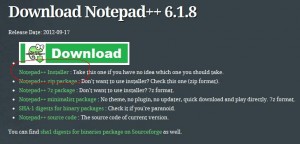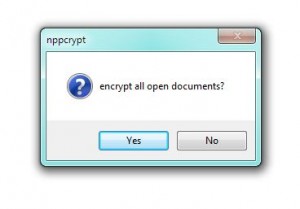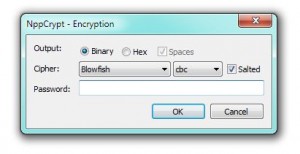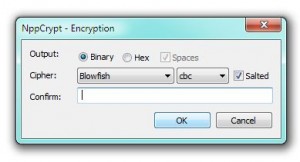If you think your files on Dropbox or Microsoft’s Skydrive are private, think again. They’re not. Microsoft announced this week that nude photos, whether real or drawings, cartoons or paintings, cannot be uploaded to your Skydrive folder…even if your folder is set to Private. How would they know unless they look at everything users upload to their folder? As shocking as this may seem, you have to realize that anything you upload to the Internet can be seen by someone else.
Dropbox, one of our favorite free cloud companies, recently had a security lapse. Anyone could log in to any account without using a password. This went on for about four hours. In our estimation, cloud storage is neither safe nor private. Here’s how to take care of the private part. We’re going to walk you through a couple of options, one simple, one a bit more complicated, which you can use to keep your stuff away from prying eyes.
The concept: If you want to keep something private on your computer, you can use a password to protect the computer or you can encrypt the file or folder itself. When you put data up to the cloud, you assume that your password will keep it private. As we’ve seen with Microsoft and Dropbox, a password won’t keep anyone who works for the cloud company out of your stuff. Therefore, you are encouraged to encrypt it. Here’s an easy way to do that:
1. Download and install Notepad ++ . Get it here: http://notepad-plus-plus.org/ Notepad ++ is free and much more powerful than the standard Notepad that comes with any version of Windows. Most of you should download the installer version which is highlighted in this image:

2. Open Notepad ++ and type a few words. For now, it doesn’t matter what you type, even one letter will do. Here’s our example. You will notice that Notepad ++ is a bit more spartan than the regular Notepad but, believe us, it is far more powerful.

3. At the top, look for the word ‘Plugins’. Click on it then click on NppCrypt then choose and click on Encrypt. Three steps represented in this image:

4. Make sure that you only have ONE file open, the one you want to encrypt. This is important. If you have another text file open, you might encrypt it as well as the current file. Notepad ++ will attempt to prevent this, using this menu, but mistakes can happen, right?

5. You’ll see a faint line of open documents in the second and third photos above. Click on your open files and close them down, one by one. Then click on Yes, simply because you only have one file open and you want to encrypt it. This menu will come up:

6. You’re entered the password once but Notepad ++ will ask you to enter it again. This is normal with encryption, basically making sure you didn’t commit a typo the first time.

7. As you will see in this next photo, the text is not encrypted. You can’t read the words until you decrypt the file.

TIP: The file that you have just encrypted is just like any other text file except that you can’t read it. You can delete text, add text, whatever you want. Therefore, make sure you save the file immediately and don’t make any changes in it. Why? Because you don’t know what you will be deleting if you accidentally backspace once. Sure, you can add text but it won’t be encrypted unless you re-encrypt the file again. Here is an image of a file that is partially encrypted.

As you can see, you are able to encrypt part of a text document or all of it. If you edit something that you have already encrypted, you have to re-encrypt it. We hope that makes sense. Save the file as normal, either on your computer or directly to your Skydrive or Dropbox folder. Make sure you remember the password. You can’t retrieve that password from anywhere else except your brain!
Tip: The file you have just created looks like any other text file. You cannot tell that it is encrypted until you open it. Notepad ++ will open the file but you won’t be able to read anything until you decrypt it. (Plugins, NppCrypt, decrypt then enter the password.) On the bright side, no one else can read it either!
This is step one on your journey to protect your privacy. If you don’t care about who reads your personal messages or notes, don’t worry about all of this. We feel that what we do or write or photograph is no one’s business but our’s. Employees do snoop, we guarantee it. Nothing in the cloud is private.
Next time, we’ll tell you how to create an encrypted folder that will keep prying eyes out of your cloud container. Once you put something into that encrypted folder, no one can see it without a password.
Thanks for reading!

“Privacy in the Cloud – Your personal files are not private or safe.
| Computers Made Simple” seriously enables me ponder a small amount extra.
I admired every particular piece of it. Thank you ,Nikole
Thanks for your comments. I know it’s spam but I took out the spammy part and left the rest.
Thanks for sharing your thoughts about Privacy in the
Cloud – Your personal files are not private or safe.
. Regards
We left this in, edited of course, just to show how spam can look like a real comment sometimes.
Wow, incredible weblog layout! How long have you ever been blogging for?
you made running a blog look easy. The total look of your
web site is great, let alone the content!
This is an example of spam, complete with an email address which leads to the spammer’s site. Make sure you edit these when you find them, taking out the offending link each time. Akismet missed this and we’re leaving it here as an example for fellow or new bloggers.